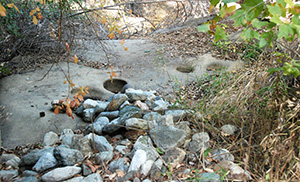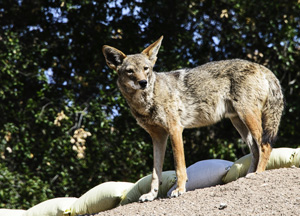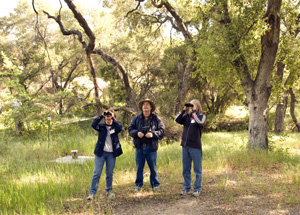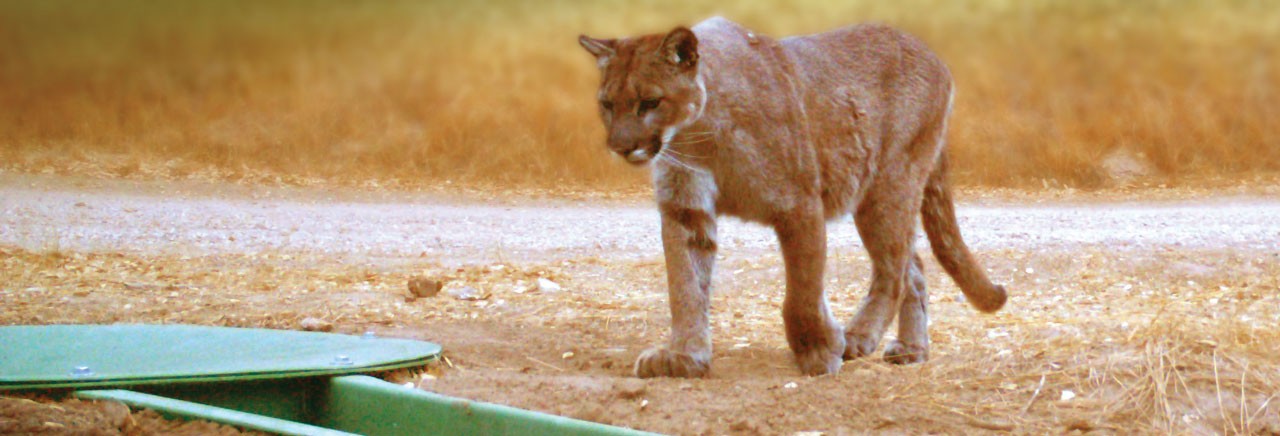Lasting Legacy
Due to the advanced scientific nature of the testing and research work conducted at the former Santa Susana Field Laboratory, public access to the site was restricted for decades. This history of secrecy has left the site largely undisturbed; Santa Susana is home to state and federally protected plants and diverse animals.
In addition, the work was confined to approximately one-fifth of the site, while the rest of the property was left undeveloped to act as a buffer zone. Over 1,300 acres remains as undeveloped landscape and restoration efforts are transforming the formerly developed areas.
The best remaining Native American pictographs in Southern California are at Burro Flats Painted Cave, which is listed in the National Register of Historic Places.
 Santa Susana has great biological and cultural significance, such as riparian woodlands and Native American pictographs. Evidence of the site’s early inhabitants has been found throughout the property.
Santa Susana has great biological and cultural significance, such as riparian woodlands and Native American pictographs. Evidence of the site’s early inhabitants has been found throughout the property.
Wildlife Habitat
 Santa Susana, certified through the Wildlife Habitat Council’s Corporate Lands for Learning program, is home to diverse animals including coyotes, mountain lions, bobcat, deer, hawks, snakes and frogs.
Santa Susana, certified through the Wildlife Habitat Council’s Corporate Lands for Learning program, is home to diverse animals including coyotes, mountain lions, bobcat, deer, hawks, snakes and frogs.
Located 30 miles from downtown Los Angeles, Santa Susana is dominated by sandstone cliffs, sweeping vistas and oak woodlands. Abundant wildlife – including mountain lions, bobcat, coyotes, deer and hawks – roam the four-square mile landscape. Santa Susana lies in the heart of the biggest and most at-risk remaining habitat linkage in Southern California, a biological life link connecting the Los Padres National Forest to the coastal Santa Monica Mountains.
Two endangered plant species can be found at Santa Susana: the Santa Susana tarplant and Braunton's milk vetch.
Boeing’s cleanup will protect the site’s vast biological and cultural features. The pocket field guides below highlight the diverse species of animals, birds and plants found onsite.
Research Lab to Learning Lab
As Santa Susana transforms to open space, Boeing is working to preserve the thriving ecosystem by collaborating with a number of organizations on biological studies throughout the site. Santa Susana received Conservation Certification from the Wildlife Habitat Council in recognition of Boeing’s educational programs and work with community partners.
The San Fernando Valley Audubon Society performs year-round bird banding and owl surveys. They have identified more than 130 species of birds and 12 bat species, most notably the Canyon Wren, which is rarely captured in the U.S. The Southwestern Herpetologist Society studies reptiles and amphibians.
Scientists from the Pollinator Partnership assess the abundance and diversity of pollinators, including bees and butterflies. The data is used to aid in habitat enhancement projects and to better protect rare plant species.
Boeing partners with area schools to support high school and college student studies, including Oak Park High School, USC, UCLA, Moorpark College and Pomona College, among others. Each year, students at Woodbury University use Santa Susana’s natural, cultural and historical features to develop a comprehensive design that proposes sustainable remediation measures and concepts for future site use.
Boeing also hosts bus and walking tours that attract thousands of community members every year.
 Boeing partners with a host of educational and environmental organizations, including the San Fernando Valley Audubon Societ, on research that enhances knowledge of the site’s ecology.
Boeing partners with a host of educational and environmental organizations, including the San Fernando Valley Audubon Societ, on research that enhances knowledge of the site’s ecology.
